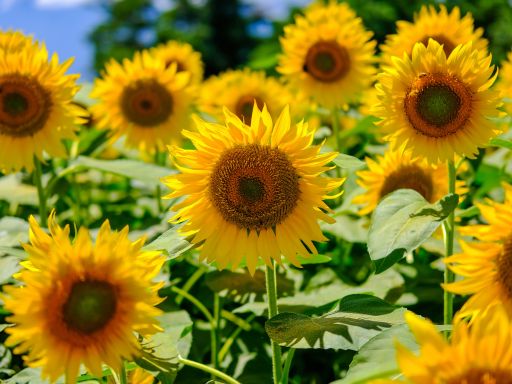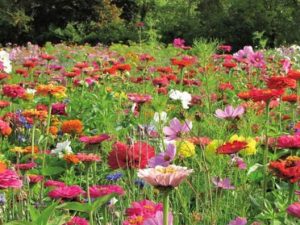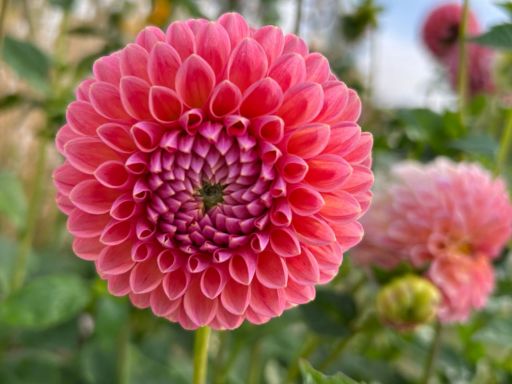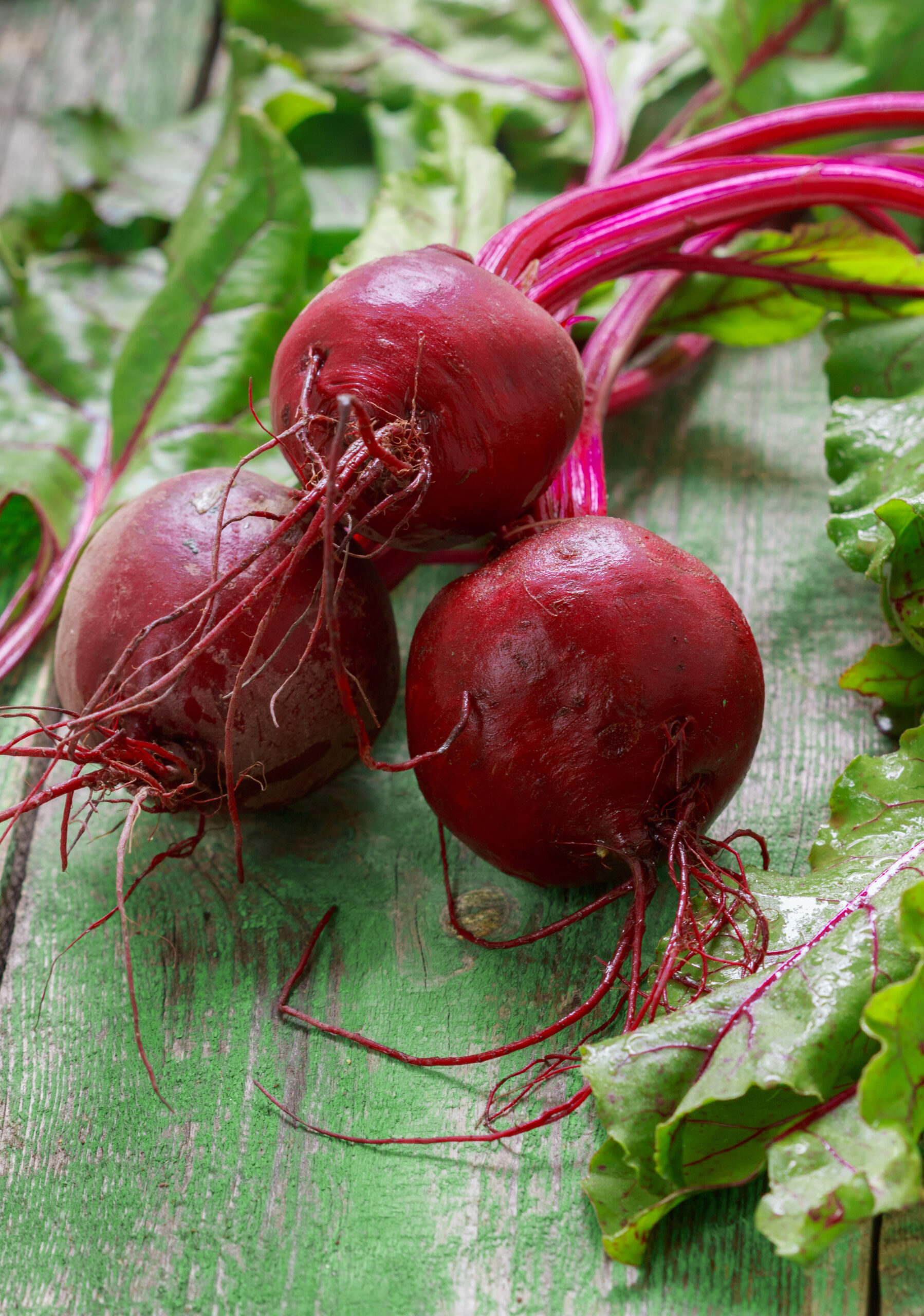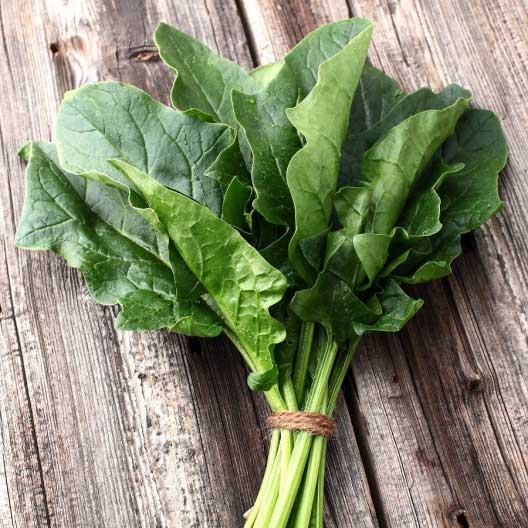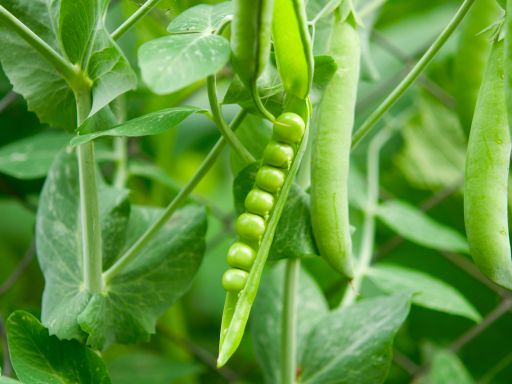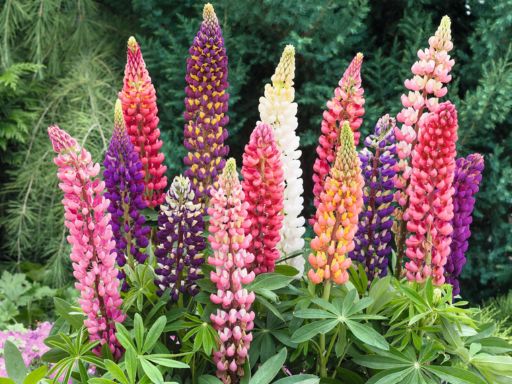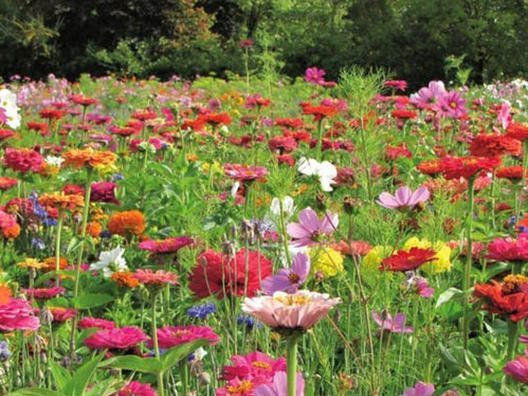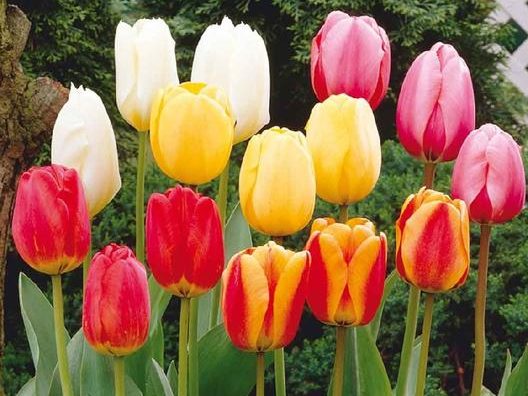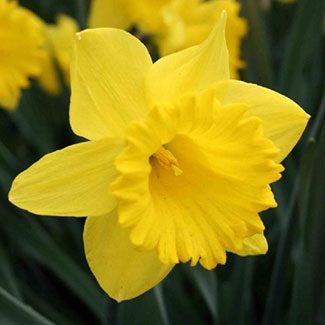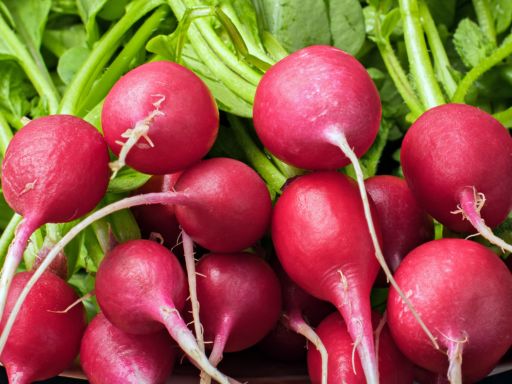Gardening in Zone 4
Zone 4 gardening teaches you to work with nature, not against it! This zone offers a unique and rewarding opportunity to embrace the beauty of cold-hardy plants and creative growing techniques in states like Colorado, Vermont, Wisconsin, and Wyoming. While the shorter season means being strategic with plant choices, you can still cultivate a lush and thriving garden filled with resilient perennials and carefully chosen annuals. With the right knowledge and strategies, you’ll discover just how abundant and beautiful a zone 4 garden can be! See Zone 4: Spring for garden projects and the best flowers and vegetables to plant during that season; and see Zone 4: Fall for gardening tasks and planting possibilities later in the year.
First and Last Frost Dates
To select the right plants and determine optimal planting times, knowing your region’s first frost dates and extreme minimum temperatures is essential. Find this information in Eden Brother’s USDA hardiness zone map here.
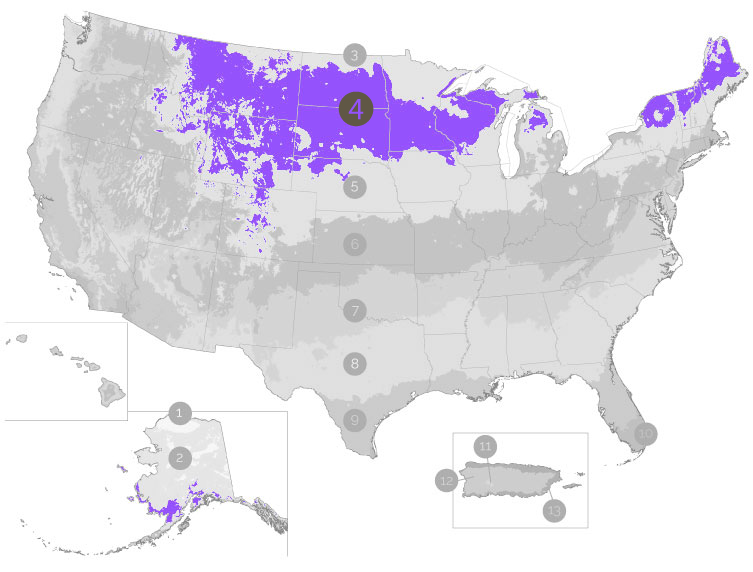
In zone 4, the first frost typically occurs between September 1-30, while the last frost is between May 1-31.
Average Growing Season: 100 days
Average extreme minimum temperatures range from -20°F to -30°F, making it too cold for many perennials. For plant suggestions, refer to the “What’s Growing?” sections of this guide. For a more detailed guide on plants that do well in zone 4, check out the “What’s Growing in Spring” or “What’s Growing in Fall” sections for specific recommendations.
Zone 4: Spring
Garden Maintenance and Projects
In zone 4 gardening, the growing season is brief so it’s important to make the most of warmer spring days to get a jumpstart on your garden. Key garden maintenance tasks include:
- Prep and Enrich Soil – Loosen the soil to improve aeration and incorporate compost or other organic matter to boost nutrients.
- Test Soil – Once the ground has thawed, take samples for testing and determine what soil amendments are necessary to enhance fertility, balance pH, and promote overall soil health.
- Build or Repair Garden Structures – Set up trellises for climbing plants like sweet peas, cucumbers, or clematis, and check existing trees and shrubs for structural support needs.
- Apply Mulch or Landscape Fabric – This helps to control weeds, retain moisture, and stabilize soil temperatures.
- Start Seeds Indoors – In Zone 4, starting seeds indoors is essential, especially for tender annuals or plants that require a longer growing season to reach maturity.
What’s Growing in Spring?
That magical moment in zone 4 when the snow starts melting and the first signs of life begin to poke through the soil, cold-hardy plants in zone 4 begin to emerge, including early bloomers like crocus, hyacinth, and early daffodils. Ornamental trees in zone 4 begin to unfurl including redbuds, flowering dogwoods, red maples, magnolias, and viburnum.
Flower Seeds to Plant in Spring
For zone 4 gardening, where the growing season is short, it is important to choose cold-hardy, quick-maturing annual plant varieties that can be directly sown into the garden once the soil warms and the threat of frost has passed. Some great zone 4 flower options for direct seeding include:
Zinnias are great options for zone 4 gardeners. Although they are heat-loving, zinnias grow quickly and boast colorful flowers that are known for their long-lasting blooms and appeal to butterflies. Sow directly after the risk of frost has passed or start indoors for a head start.
Many other zone 4 flowers benefit from being started indoors to ensure strong growth and ample blooms within the shorter growing season. Consider starting these varieties indoors before transplanting out in the spring:
Flower Bulbs to Plant in Spring
In zone 4, gardening with bulbs, corms, and tubers requires planning. While most bulbs are best planted in the fall, there are a few varieties that thrive when planted in spring after the last frost. These include:
The following warm-season bulbs and tubers thrive in zone 4 but there’s a twist—they are not winter-hardy in this zone. This means that you can grow them beautifully during the warm months, but you will need to lift and store them over winter if you want to keep them year after year. These warm-season bulbs and tubers include:
For optimal results, plant these zone 4 flower bulbs in late spring to early summer and enjoy their vibrant flowers until the first frost. In the fall, dig them up and store them through the winter for replanting the following year.
Though dahlias are only winter hardy in zones 8 through 11, gardeners in zone 4 can absolutely still grow dahlias and enjoy their lovely blooms. Plant the tubers in the spring and the plants will be in bloom by mid to late summer. They can be treated as an annual, or the tubers can be dug up before freezing temperatures set in and stored until next spring.
Vegetables and Herbs to Plant in Spring
Despite the lingering cold temperatures in early spring, zone 4 gardeners can still get a head start by planting a variety of cold-tolerant vegetables that thrive as weather warms. Spring vegetables such as spinach, lettuce, peas, radishes, carrots, and beets can be directly sown into the garden once the soil is workable. Additionally, hardy perennial herbs like sage, thyme, and oregano can flourish in the cooler conditions of zone 4.
Although harvests may be minimal, those hoping for summer fruits such as tomatoes and peppers should start indoors early (8 to 10 weeks before last frost) and select early-maturing and relatively cold-hardy plant varieties such as Early Girl and Tiny Tim for tomatoes and Jalapeno M for peppers.
Other Springtime Planting Possibilities
Many rare and unusual heirloom varieties can be grown in zone 4 to give the garden a unique look and a key to the past. Hyssop, lemon mint, Canterbury bells and even marshmallow seeds can be sown in zone 4. Cold-hardy fruits such as apples, cherries, raspberries, and strawberries can be planted in late spring, once the risk of frost has passed. Microgreens like radishes, pea shoots, kale, and sunflowers can be grown indoors year-round or outdoors in spring, summer, and fall.
Looking Ahead to Summer
When planning ahead for zone 4 gardening in the summer, it’s important to consider plants’ water and structural support needs. Set up trellises for climbing and tall-growing plants such as cucumbers, pole beans, tomatoes and peppers. Regular watering is essential for healthy growth during warmer months.
Zone 4: Fall
Garden Maintenance and Projects
As the growing season winds down and temperatures cool, it’s time to focus on garden clean up and preparing for winter. Key garden maintenance tasks include:
- Clean up: Remove any diseased or dead plant material to prevent overwintering pests and diseases from affecting next season’s plants.
- Prepare perennials for winter: Add a layer of mulch, such as straw or shredded leaves, to protect perennials, maintain soil structure, and reduce the impact of snow compaction on soil.
- Plant cover crop: Consider sowing cover crops like clover, vetch, or winter rye to boost soil health and prevent erosion or compaction over the winter months.
- Pruning: As temperatures drop below freezing and plants enter dormancy, lightly prune dead, damaged, or diseased wood from perennials.
What’s Growing in Fall?
Fall in zone 4 is a time of rich color and hearty harvests! We are experiencing cooler temperatures and shorter days, but there is still a lot growing. These cool-season crops love crisp weather and often taste sweeter after a light frost: kale, spinach, Swiss chard, beets, and leafy lettuce. Driving around you may see mums, asters, black eyed Susans, and coneflowers lingering into autumn.
Flower Seeds to Plant in Fall
For zone 4 flower gardening, sow seeds in late September through October, around the first frost but before the ground freezes. This allows seeds to settle into the soil while ensuring they don’t sprout until the spring. Choose cold-hardy plant varieties such as lupine, Sweet William, and shasta daisies. Or, plant our regional or state wildflower mixes that are especially formulated for specific areas. These single varieties and mixes benefit from the winter chill resulting in beautiful blooms when the weather warms.
Flower Bulbs to Plant in Fall
In zone 4 gardening, fall is the best time to plant most bulbs as they need a cold period (something zone 4 gives quite well!) to trigger blooming in the spring. Some cold-hardy bulbs that are perfect for fall planting include:
Vegetables and Herbs to Plant in Fall
In zone 4 fall gardening, it’s important to choose cold-hardy plants that can withstand early frosts. Fast-growing vegetables and herbs that can be planted in late summer for fall harvests include spinach, kale, radishes, arugula, lettuce, mustard greens, cilantro, and carrots. These varieties are able to thrive in cooler temperatures and provide fresh harvests before the hard freeze.
Some perennial herbs that can survive zone 4 winters include chives, oregano, thyme, and winter-hardy lavender. These herbs should be well-established before the first hard frost and often benefit from a layer of mulch to help protect them through the winter months.
Other Fall Planting Possibilities
When fall flowers like echinacea go to seed, they become a natural buffet for birds, especially finches and chickadees, who rely on them for nourishment as colder weather sets in. The seed heads also add structure and texture to the winter garden, providing shelter for beneficial insects and small wildlife. Leaving spent blooms in place supports biodiversity and turns your garden into a mini wildlife sanctuary through the colder months.
Fruits like apples, pears, cherries, elderberries, strawberries, and blueberries ripen in the late summer and fruit into the fall, providing a delicious harvest.
Microgreen varieties such as radish, pea shoots, kale, and sunflowers are typically grown indoors but can thrive outdoors in spring, summer, and fall in zone 4, allowing you to enjoy fresh greens well into the cooler season.
Looking Ahead to Winter and Early Spring
In zone 4, garden maintenance should continue throughout the winter with a focus on shaping and maintaining productivity for certain plants like dogwoods and cherry trees. Avoid pruning evergreens or any spring/summer-blooming plants at this time.
As winter settles in, it’s the perfect time to start preparing for next year’s garden. Research and select cold-hardy plant varieties suited to zone 4 conditions, and purchase seeds, sets, and spring bulbs that will thrive in the colder climate. In the early months of the new year, start seeds indoors to get a jump start on the growing season. Proper planning in the winter helps ensure a successful and productive garden when spring arrives.
